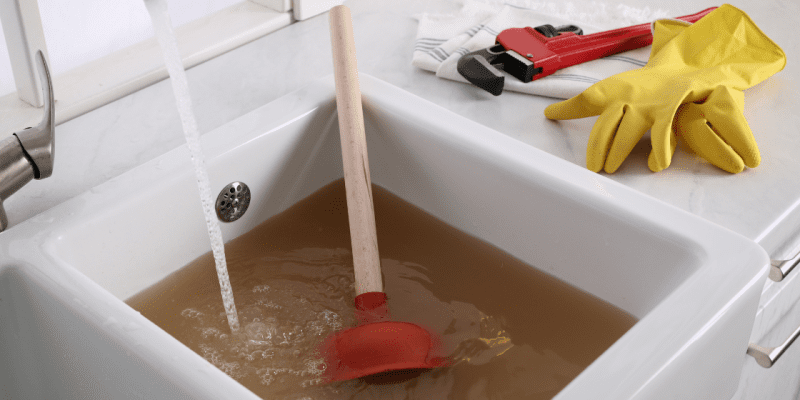It sits in the center of every sink, at the end of every bathtub, and could be anywhere at the bottom of a shower stall… that’s right. You see them all the time. Drains that faithfully work to take away soapy water, food waste and more.
So when they slow down or even quit working entirely, it is very frustrating and annoying.
Your first inclination is to grab a plunger, which might work but more than often… it doesn’t work at all. But you have to try! Sometimes, a connecting drain to the plugged one allows air to escape and the plunging action is worthless. You can plug the second drain with a towel or cloth, and that might help with the plunging action.
If typical plunging doesn’t work, consider these steps to enable a drain to do what it’s supposed to do.
Step 1
The drain could be plugged with something that could be melted, dissolved or moved by super-hot water. Boil an entire pot of water and (very carefully so you don’t get burned) pour it into the drain. It might be enough to clear the drain.
Step 2
Often, protein matter, such as hair, plugs up drains, especially in sinks, tubs and showers in bathrooms. Carefully pouring chlorine bleach into the drain, enough to fill the drain, and then allow the solution to work on the hair will work. Chlorine bleach is very inexpensive but very powerful. It will eat its way through a drain blocked with hair and clear it out so it drains effectively.
 Step 3
Step 3
It’s time to get physical. Unclogging a drain with an auger, also known as a “snake” will move what’s stuck. You can purchase a tool like this at your local hardware store. Carefully insert the end of the snake into the drain and push and pull until you move the blockage or can pull it out. You can do this from the drain itself or from the pipe below if accessible.
Sometimes a clogged drain creates a big mess. When that happens, and for all your cleaning needs, call your cleaning pros for help.

